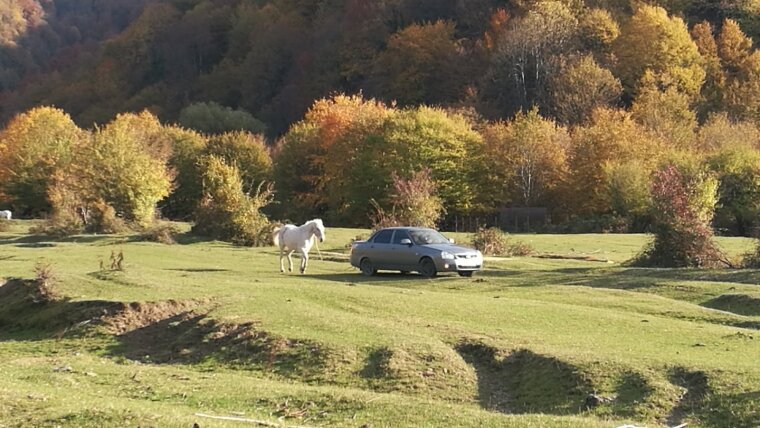
2024-10-08
Introduction
The Chechens – the second largest indigenous ethnolinguistic group of the Caucasus – form a multidimensional network of interrelated communities not just in the northern Caucasus, but also living dispersed across the Near and East Middle East (after waves of largely forced migration to the Ottoman Empire and deportations to Kazakhstan and Kirgizstan) and nowadays also in Europe and Northern America. This network has an essential point of reference – the Caucasian homeland – but it is nevertheless not centrally organized or governed, and like other human societies, can be analyzed as a complex adaptive systemExternal link. In this blog I follow the suggestion by Korosteleva and Petrova (2021)External link, and discuss resilience as a property of complex adaptive systems by taking a closer look at a – in my view – particularly resilient community, namely the Chechens of the Pankisi Gorge in Georgia, who are commonly referred to as the Kists. Korosteleva and Petrova (2021) stress that resilience should be explored at the local level: it is “identity shaped and driven by a sense of a ‘good life’; infrastructures of communal support; philosophy and traditions of neighbourliness; solidarity and convocation of the peoplehood, as a process that makes communities endure and transform in the face of adversity.” Societies and communities understood as complex adaptive systems are more than the sum of their parts. Links and relations between the nodes in the networks develop from below, are constantly adapting, and require no central control.
Who are the Kists
The Chechens of Georgia are called Kists or Kistebi in Georgian. In November 2022, the then MA student of Caucasus Studies, Maximilian Grübsch, and I visited Pankisi (Figure 1, Figure 2). We were kindly hosted by Professor Rostom Pareulidze and his wife Mzia in their house in Omalo (Figure 3). Kists live compactly in the eastern province of Kakheti in a few villages of the Pankisi Gorge (e.g. Jokolo, Omalo and Duisi) (Figure 4). Their official number is between 6,000 and 7,000 peopleExternal link. They migrated from Chechen settlementsExternal link on the northern side of the main Caucasus ridge in order to escape economic hardships and blood feuds, and arrived in the Pankisi Gorge (in part forcibly) between the 1830s and the 1870sExternal link (Figure 5). They were Christianized – Georgian influence on the neighboring Chechens and other people and century-long attempts of spreading Orthodox ChristianityExternal link are well-documented in the literatureExternal link. Their names were Georgianized by adding the typical Georgian surname-forming suffixes -shvili or -dze. A woman in her seventies told us that naming policies sometimes also affected first names: she was supposed to be named Leyla, but bureaucrats did not accept the Muslim name and instead wrote a Georgian name in her documents.
The church in Jokolo is reminiscent of the Christian past (Figure 6). Our host told us that it started to rain after WahhabisExternal link removed the cross from the church tower. The rain would not stop until the cross was found and put back up again. However, as with other Chechens, the Kists never fully gave up IslamExternal link and most families converted back to Sunni Islam by the early 1970s. At the beginning of the 20th century a mosque was built. Today there are several new mosques in the Pankisi villages (Figure 7). Among the Chechen communities the Kist villages were they only ones that were not deportedExternal link to Kazakhstan and Kyrgyzstan in 1944. During the late years of the Soviet Union, many Kists migrated to Chechnya in search of work: many people who we met had lived in Chechnya for some time. With the beginning of the First Chechen WarExternal link in 1994, the situation radically changed and Kists flew back home. During the Second Chechen WarExternal link, Kists hosted several thousand refugees from ChechnyaExternal link. Since then, the Pankisi Gorge has been described as “Dormant volcano” or “terrorist paradise” in Georgian and foreign mediaExternal link when links between Al-Qaeda and PankisiExternal link were disclosed, and some years later when young men from Pankisi were recruited for fighting in Syria and for ISExternal link. In German mediaExternal link, the Pankisi Gorge became prominent after the assassination of Zelimkhan KhangoshviliExternal link in Berlin in August 2019. The cousin of Zelimkhan Khangoshvili, Nona KhangoshviliExternal link, is a local Pankisi activist who issued a book in Georgian about Pankisi and the Kists. The Khangoshvili family is a prominent figurehead of the entire Pankisi Gorge. The local elder of the family and the Chechen community, Khaso KhangoshviliExternal link, has written books about the Kists’ historyExternal link and can be seen in several interviews on YouTube.
Since the last counterterror operationsExternal link, some yearsExternal link have passedExternal link. The Pankisi Gorge is a beautiful valley that – just like many other regions in Georgia – tries to develop tourism as the many guest houses in the villages testify. Hospitality is a major hallmark of Caucasian peoples. Kists are hospitable – with us, with other visitors and of course with their Chechen brethren fleeing the war in Chechnya and now with those fleeing the Russian mobilization. During our visit, we spotted quite a few cars from Russia with the number ‘95’ on the plate, which stands for Chechnya. Today, moving to Chechnya is not an option anymore. Some Kists to whom we spoke criticized Putin, Kadyrov, Chechen and Russian politics. A man in his early fifties summed up his point of view by saying “we are more relaxed than the Chechens in Chechnya.”
A Georgian flag flies in front of the kindergarten. All Kists to whom we spoke identified themselves as loyal Georgian citizens despite the fact that not even all of them have Georgian citizenship. Nevertheless, the relationship with the Georgian officials and Georgian politics is ambiguous and Kists feel stigmatizedExternal link. As we are told, it is not easy to find work in the public administration or in other parts of the public sector. Kists are checked more thoroughly by police officers and other state representatives than ethnic Georgians, for instance when leaving the country. Furthermore, economic hardship and unemployment continue, and young and middle-aged Kists leave Georgia in great numbers. Wherever we walked around in the village, our hosts would tell us which of their relatives and neighbors moved where: “Their children are in Sweden. They are in France. They are in Germany. Those over there are also in Germany …” (Figure 8). At the same time Kists are attached to the homeland in Pankisi and build houses in which they will probably never live.
Language
In Pankisi, a dialect of Chechen is spoken that noticeably differs from Standard Chechen, not only because of Georgian loans, but it is mutually understandable with the standard form. Pankisi Chechen also shows subtle distinctions between the villages. Everyone, except perhaps for the oldest females, are bilingual in Chechen and Georgian. Many Kists are even trilingual because they have lived in Chechnya or other regions of the Russian Federation or went to Russian schools during the Soviet period. In a recent study by Forker and Botkoveli (2024External link), seven out of ten interviewed Kist youngsters responded that they felt both Chechen and Georgian to be their mother tongues.
Thus, the sociolinguistic situation is quite different from that of other minorities of Georgia, in particular from Armenians and Azerbaijanis, and also from the situation in Chechnya. In Pankisi, Chechen mostly or even exclusively functions as an oral language within the tight Kist community. Georgian is used in the public domain and as the main means of written communication such that there is a clear functional divisionExternal link. The language plays an important role for national identity and is vital and passed on to the next generation (this has also been observed in other Chechen diaspora communities). Schooling is in Georgian even though some children who have not attended kindergarten speak only Chechen when they enter school, and thus teachers have to adapt (Figure 9). The vast majority of the teachers nowadays are local Kists. This was different when schools were established some decades ago; at that time teachers were Georgians. But, as soon as the first Kists finished school and university, they also began to work as teachers. According to a local teacher, in grade 5 and 6 Chechen is taught for two hours per week with modern books imported from Chechnya and financially supported from the Georgian state, as well as with locally produced books not affected by Russian propagandaExternal link. The main goal of Chechen classes is reading and writing and not so much speaking and understanding since all children (and adults) know their language very well.
Social relations, religious faith, and resilience
While life in Georgia is not easy, life in Pankisi is no less difficult, but Kists are pragmatic and flexible. Many of them go where they hope to find a better life, but some continue to keep their homeland alive. Villages do not empty. There are constructions sites everywhere. You can see children and youngsters on the streets alongside the older generations.
So why are the Kists (and the Chechens more generally) a resilient people? A man told us: “We could never rely on any power or government and we don’t expect to get anything from officials. We are used to resolving our problems on our own.” But, it is not only this spirit of independence and personal responsibility, which can be linked to the long tradition of Chechen self-governance, that helps Kists to go on. Close social ties gave rise to a complex system of collective work and mutual help called ‘belkhi’External link, which, in turn, played a role in fostering social cohesion. One instance of this is the communal mill in Jokolo that can be used by inhabitants of Jokolo and the neighboring villages (Figure 10). At the very local level of the settlements, close relatives traditionally live next to each other as neighbors in the same street. Through marriage and institutionalized friendship, new relations are established, sometimes into the other villages or across the borders of Pankisi, but in the vast majority of cases, within the Chechen community. This brings me back to the beginning of this blog and the quote from Korosteleva and Petrova (2021). If Chechens have one thing for sure, it is neighborliness and solidarity, in particular at the local level. Family ties and a (ideally large) kinship network have been identified as a main source of societal resilience in neighboring AzerbaijanExternal link and are even more important among the Kists. For instance, all the people to whom we spoke during the visit married other Chechens from Pankisi. In societies in which the state does not provide, people have to employ other means, and thus the first and foremost source of resilience are human relations established and consolidated by daily interaction in the immediate geographic proximity. And, last but not least, we have to mention religion and spirituality. Jokolo features two mosques (one can be seen in Figure 7), and there are several others in the Pankisi valley. Religious belief and religious practice play an important role for most Kists. The (mostly positive) link between faith and resilienceExternal link has been explored by philosophers, psychologistsExternal link, public mental health expertsExternal link, and social scientistsExternal link alike, and forms an indispensable part of life in Pankisi.
--
1 Gaurgashvili, Diana. 2019. “Cooperation of Chechnya with the Chechen diaspora in Georgia (The end of 20th –the beginning of the 21st century).” MA thesis (in Russian). Tbilisi State University.
2 Grübsch, Maximilian. 2023. Georgische Fremdwörter im Tschetschenischen: Gender Assignment [Georgian loan words in Chechen: Gender assignment]. MA Thesis. Friedrich-Schiller-Universität Jena.
-
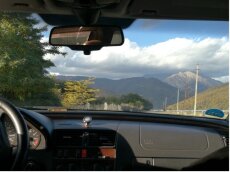
Figure 1: The road to Pankisi, Georgia, November 2022
Image: Diana Forker -
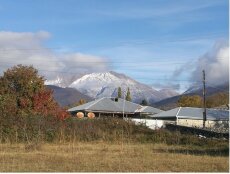
Figure 2: The Pankisi Gorge and the surrounding mountains, Georgia, November 2022
Image: Diana Forker -
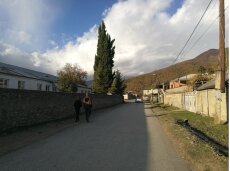
Figure 3: A street in Omalo, Georgia, November 2022
Image: Diana Forker -
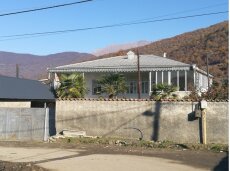
Figure 4: A house in Jokolo, Georgia, November 2022
Image: Diana Forker -
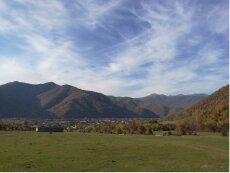
Figure 5: Omalo village, Georgia, November 2022
Image: Diana Forker -
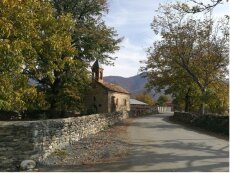
Figure 6: The old church of Jokolo, Georgia, November 2022
Image: Diana Forker -
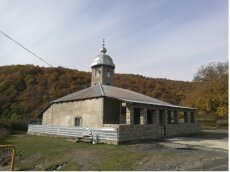
Figure 7: A mosque in Jokolo, Georgia, November 2022
Image: Diana Forker -
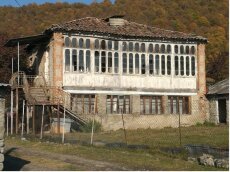
Figure 8: An abandoned house, Georgia, November 2022
Image: Diana Forker -
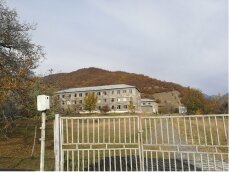
Figure 9: The school in Jokolo, Georgia, November 2022
Image: Diana Forker -
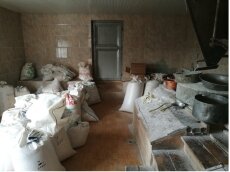
Figure 10: Inside the communal mill in Jokolo 2021, Georgia, November 2022
Image: Diana Forker
Further References:
Chechen vocal music from Pankisi
https://www.youtube.com/watch?v=UiDW6oSN95sExternal link
Author Bio: Prof. Dr. Diana Forker, Project Leader and Principal Investigator, Institute for Caucasus Studies, Friedrich-Schiller-Universität Jena
Peer reviewed by: Maximilian Grübsch, University Assistant for East Slavic Linguistics, Department of Slavonic Studies, University of Vienna
How to contribute to the Across the Caucasus Blog
The blog is open to anyone who is interested and informed in writing about contemporary developments in the Caucasus and the wider Black Sea and Caspian Sea region including but not limited to scholars, researchers, freelance writers, activists, artists, civil society members, and politicians. Young female researchers and researchers from the Caucasus countries are particularly encouraged to submit their articles. You will find a detailed list of possible topics and the blog guidelines on the website. Before you send your work to us, please make sure to familiarize yourself with our guidelines. If you are not sure whether your topic fits our thematic scope or have another question related to the blog, feel free to contact us at jenacauc@uni-jena.de and indicate “Across the Caucasus Blog” in the subject line.